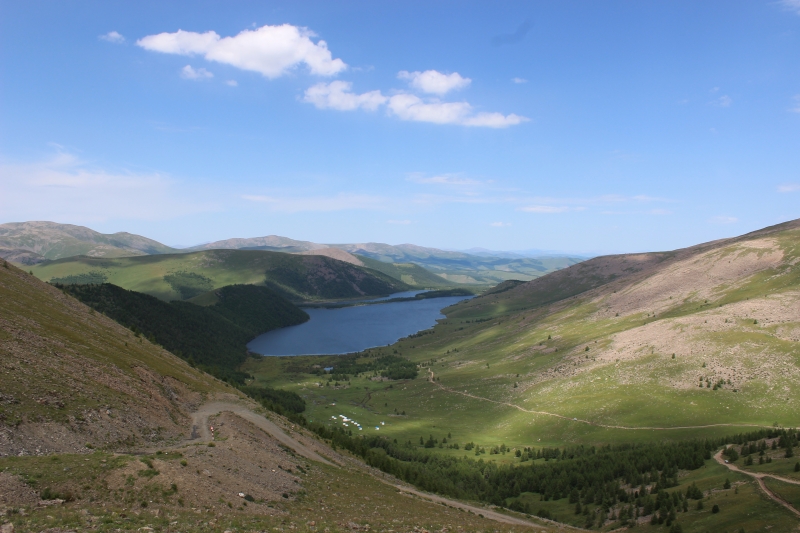Horse Riding Orkhon valley
Orkhon Valley is located North of the province of Ovorkhangai, in the central part of Mongolia, about 360 kilometers from Ulan Bator. Located at the foot of the Khangai range, this site protected by UNESCO since 1992 covers 121.967 hectares along the Orkhon River. A buffer zone of 61.044 hectares is protected too. Many nomadic tribes lived in Orkhon Valley for a thousand of years. Also, the Orkhon River is the longest river in Mongolia which is 1200 km going to Lake Baikal.
Today, Orkhon Valley is a large place of nomadism where many breeders usually set up their camp. The picturesque steppes’ landscapes, surrounded by the verdant Khangai Massif, the rich fauna and flora, make this area the perfect place to discover nomadic Mongolia in an enchanting leafy setting. It’s also very pleasant to ride horses and the valley is the point of departure for many hikes or treks in the surrounding mountains. It’s possible to fish or to bike in the mountains.
The basin of the Orkhon River has many historical vestiges because many successive nomads had been living in the valley since the prehistoric period. This area is often considered as the cradle of the nomadic civilization of the steppes and was a real forum of civilizations during the last millennium because it bound East to West in the middle of the large Eurasian continent.
After the Orkhon valley there is Naiman nuur National Park is one of the best place for travelers.
Naiman Nuur National Park is located in the about 35 kilometres Southeast of Orkhon waterfalls, but the track is impassable. This way is accessible only to hikers and horsemen/women who will enjoy an exceptional nature, whereas the jeeps will have to skirt around the mountains by Long and different way. in this national park has the typical landscapes of the Mongolian high mountains with their large forests of larches.
The area of Naiman Nuur, ”Eight lakes”, formed behind the volcanic eruptions that occurred all along the centuries. The park is 2400 metres above the sea level. An area of 11.500 hectares has been protected as a National Park since 1992.
The eight lakes in question are lakes Shireet, the largest and the most beautiful, Khaliut, Bugat, Khaya, Khuis, Onon, Doroo and Bayan Uul. Two of the smallest lakes are completely dry, and the second largest lake, Khuis Nuur, is 90% dry.
In the centuries, many nomadic tribes lived in Orkhon Valley. The first proofs of living were found on the sites of Moiltiin Am and Orkhon-7, and allow us to think that the valley was inhabited 60.000 years ago. Afterward, the valley was still inhabited during the prehistoric period and the Bronze Age, then was successively inhabited by the Huns, the Turkish-speaking people, the Uyghurs, the Kidans and at last by the Mongolian people.



